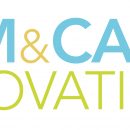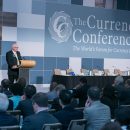authenticating currency with numbers
07 August, 2009
 In a past life I worked for one of the premier currency sorter manufacturers, which is primarily where I cut my teeth in this business. One of the things that impressed me then (and still does now) is the technology that goes into authenticating currency. One technology in particular that I saw as revolutionary was the ability to read the serial number of a note as it flew down a track on a sorter at something like 30 feet per second. The system not only reads the serial number but can compare it to a known database of “authentic” notes and “tracked” notes (the latter having been identified as used in criminal activity). Because the system also tracks the depositor of those notes law enforcement officials have a better chance of catching the bad guys. All of this was possible more than ten years ago. So I was intrigued when a colleague sent me a patent abstract for (apparently) the same technology – filed a little over a week ago.
In a past life I worked for one of the premier currency sorter manufacturers, which is primarily where I cut my teeth in this business. One of the things that impressed me then (and still does now) is the technology that goes into authenticating currency. One technology in particular that I saw as revolutionary was the ability to read the serial number of a note as it flew down a track on a sorter at something like 30 feet per second. The system not only reads the serial number but can compare it to a known database of “authentic” notes and “tracked” notes (the latter having been identified as used in criminal activity). Because the system also tracks the depositor of those notes law enforcement officials have a better chance of catching the bad guys. All of this was possible more than ten years ago. So I was intrigued when a colleague sent me a patent abstract for (apparently) the same technology – filed a little over a week ago.
I will leave it to the patent attorney’s to debate who actually owns the intellectual property of this concept, but it is interesting to reproduce here the description of this concept. It sounds like a fool proof method of authentication, yet it has never caught on. One has to wonder why not – logistical challenges, technology expense, privacy issues, commercial processor apathy – some or all of these?
Authenticating currency has many methods that vary widely depending on the overt and covert features utilized in any particular country issue. Suffice it to say that it is not an exact science, unless you are a central bank. Depending on the depth of your pockets you might be able to afford the above mentioned technologies if you are a large processor of currency, but for the retail market and especially for the individual, we are forced to reply on our senses – or at best a technology that can “read” the more simple authenticating features. In recent times criminals have gotten much better at creating counterfeit and so currency printers have gotten even better at producing features that are difficult, impossible or at least prohibitively expensive to replicate. Based on these new manufacturing capabilities, it is a wonder to me if this new/old technology will catch favor with the market this time. Following is an excerpt from the abstract for the curious…
Abstract
A device and method for reading and authenticating currency serial numbers to prevent counterfeiting and other money-related crime is provided. The device may be retrofitted to be installed in an existing money counting machine, and may read serial numbers of currency that passes through the counting machine. The serial numbers can be captured from stationary currency prior to entering the counting machine, and the serial numbers may be authenticated by comparing the number against various databases.
Background
Since the inception of the use of paper money, central banks and governments have struggled to protect currencies from counterfeiting. Even so, perpetrators often exploit new technologies to duplicate the security features of legitimatecurrencies. As such, central banks and governments often struggle to stay one step ahead of counterfeiters. One technique for preventing counterfeiting, armed robbery, money laundering, extortion, terrorism, embezzlement, and other money related crimesrelates to undermining the anonymity of cash. For instance, as discussed in U.S. Pat. No. 3,727,003, entitled “Decoding and Display Apparatus for Groups of Pulse Trains,” issued Apr. 10, 1973, and U.S. Pat. No. 3,812,296, entitled “Apparatus forGenerating and Transmitting Digital Information,” issued May 21, 1974, the disclosures of which are hereby incorporated by reference in their entirety, preventing fraud and other crime by undermining the anonymity of telephony has been highly successfulin crime in Caller* ID.RTM. systems, which today significantly deter telephone related crime world-wide by removing the anonymity of the caller’s telephone number.
Because counterfeiters often duplicate existing serial numbers, or use serial numbers out of range for the banknote’s denomination, the anonymity of currency can be removed by effectively reading and authenticating the serial number. The serialnumber can be used to scientifically and positively determine the perpetrator’s attempts to counterfeit currency, as perpetrators would have to invent new serial numbers to get around the system, a logically impracticable or difficult task. Nonetheless,existing systems cannot adequately perform such reading and authentication, leading to less than optimal counterfeit prevention. For example, counterfeiters sometimes create “Supernotes,” near perfect counterfeit bills printed, perhaps, by unfriendlycountries and circulated outside of the United States. Creators of “Supernotes” have, from time to time, deliberately circulated “Supernotes” with small detectable imperfections to divert the attention of the authorities. Presently, existing systemsare unable to detect these notes, leaving absolutely perfect “Supernotes” to circulate undetected.
Existing systems suffer from these and other problems.
Summary
According to various aspects of the invention, a device and method for reading and authenticating currency serial numbers to prevent counterfeiting and other money-related crime may address these and other drawbacks of existing systems. Themethod may include identifying currency that has been used in unlawful activity by, for example, obtaining an image of a currency document, capturing a serial number of the currency document from the obtained image, comparing the captured serial numberagainst one or more lists of wanted serial numbers, and identifying the currency document as having been used in unlawful activity based on the comparison. In various implementations, the captured serial number may be associated with a tag that includesidentification information relating to a money exchange transaction in which the currency document was used. The image may be obtained and/or the serial number captured when the money exchange transaction occurs. For example, the money exchangetransaction may occur at a retail point-of-sale (e.g., a gasoline station), or when a financial institution processes a deposit of the currency document, or in other ways. The serial number may be communicated to a local or remote data repository forstorage, where the data repository may receive and store captured serial numbers from a plurality of sources. As such, the serial numbers stored in the data repository may be analyzed to identify duplicate serial numbers, which may be indicative oflikely counterfeit activity, or for other potential indicators of fraudulent or criminal activity.









